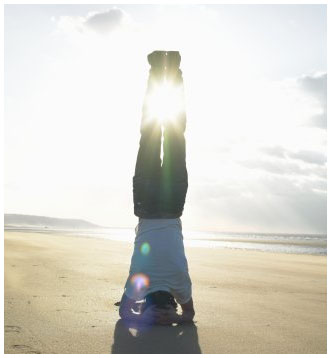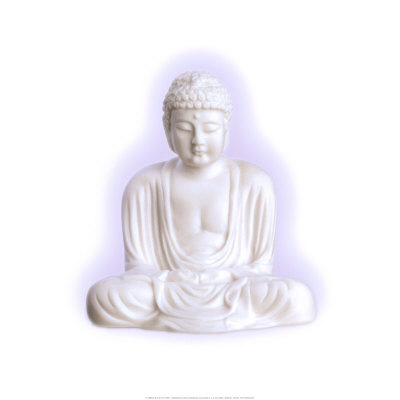
SOUL RESEARCH INSTITUTE
(866)-397-6939, 719-488-0548, 303-507-5169

SEARCH
Copyright 2008 SOUL Research Institute
C
Non-reaction is the third element of SOUL Meditation.
Broadly speaking, non-reaction means 'not reacting with craving or avesion.'
Non-reaction is that by which a ‘mental balance’ is achieved which ultimately leads to equanimity.
Equanimity is none other than the neutrality of mind, an ethically wholesome quality of mind. It keeps in the ‘middle’ by avoiding deficiency as well as excess, so it is called equanimity.
Equanimity is not just the absence of craving and aversion but also that which makes the mind balanced or impartial. Mere absence of craving and aversion does not automatically result in balanced or impartial mind. When craving and aversion is eradicated, equanimity arises and makes the mind balanced and impartial by evenly distributing mental states, by neither intensifying nor fading mental states and by conveying consciousness and the mental factors uniformly. In this sense, equanimity has its own intrinsic functional nature. Therefore, it is considered as a mental element. Because it is a mental phenomenon at the level of elements, without meditation, equanimity cannot be known ‘as it is.’
Equanimity is a very subtle mental phenomenon. It is very hard to understand it intellectually. Primarily, during meditation, equanimity can be inferred indirectly as the awareness of ‘the absence and the opposite of pleasant or unpleasant feelings.’
This ‘awareness’ of the absence and the opposite of pleasant or unpleasant feelings is most critical in differentiating equanimity from the worldly attitude of indifference, apathy, coldness, etc. It is so, because, just the absence of pleasant or unpleasant feeling is not equanimity but also the ‘awareness’ of its’ opposite. Such awareness is somewhat unique because it is actually an experience of a ‘feeling of neither-pleasure-non-pain,’ which is not the mere ‘absence’ but also the ‘opposite’ of pleasant or unpleasant feelings.
Meditation is a must to understand and arouse real equanimity. However, it cannot be developed ‘directly’ through a meditation technique like mindfulness or concentration can be developed or like the weak muscles can be developed into strong muscles by weight-training. Also, if one ‘actively’ meditates to ‘develop’ equanimity, nothing much will happen.
Equanimity arises through passive action like the action of letting-go or the action of non-action. In meditation, one has to simply let-go and passively-observe all the phenomena with mindfulness, non-reaction, wise attention, and concentration. Such understanding is necessary for those people who incorrectly train to develop equanimity by training themselves to tolerate painful feelings or by training themselves to avoid pleasant feeling.
In other words, equanimity primarily ‘arises’ as a result of the establishment of mindfulness, non-reaction and transcendence in concentration. When concentration develops due to a happy/glad state of mind and when it is coupled with mindfulness, it leads to the arousal of equanimity.
Equanimity vs. Mind-Control
I know a person from India who says that living in a third world country makes him equanimous since he has to live with so many discomforts and since he is not carried away by the comforts and conveniences of developed and rich countries of the west. He says that people living in comforts are materialistic and those living in poverty are not. He says that poor people have more potential to become equanimous than the rich.
People who think this way do not know what equanimity really is. Equanimity is degraded to mundane materialistic levels when people assume it as the quality of mind control, self-control, pain control, pleasure control, pain-pleasure-management, etc. An ignorant person thinks that he is equanimous just because he is able to tolerate pain, discomfort or inconveniences. He thinks that it is he who is equanimous because he is not reacting to pain. Such a person deepens his delusion. Such a person downgrades himself to the level of animal kingdom which is highly capable of tolerating pain and discomfort. Such a person becomes insensitive to pain, discomfort or inconveniences while unknowingly developing resentment for comforts and conveniences. He becomes attached to unwholesome way of living while incorrectly thinking that he is mastering his mind by tolerating unwholesome conditions. His resentment increases to such a level that he cannot tolerate comforts and conveniences. He feels insecure in a comfortable environment. Such is the case of many worldly-minded people of third world countries who think they are spiritual just because they are living in discomfort and poverty. Such is also the case of many religious fanatics, ascetics, and deluded monks who choose to live in discomfort as a way of training for non-reaction or equanimity.
I am not saying that people living in comforts are more likely to be equanimous. That is not the case either. An ignorant person living in comforts thinks it is ok to live in comforts because it is wholesome. He thinks it is ok to enjoy pleasures and conveniences as long as he is not attached to them. He thinks he is equanimous because he does not react to the pleasures. Such a person deepens his delusion. He becomes insensitive to pleasures and conveniences while unknowingly developing resentment for discomforts and inconveniences. He becomes attached to comfortable way of living, thinking he is mastering his mind by avoiding unwholesome conditions and by living in wholesome conditions. His resentment increases to such a level that he cannot tolerate discomforts and inconveniences and becomes a critic of disorder and poverty. He feels unsafe and insecure in an uncomfortable environment. Such is the case of many modern meditators, psychologists, philosophers and religious/spiritual gurus who choose to live in luxury.
What I am basically saying is this:
"Whenever there is any trace of resentment or approval, repulsiveness or non-repulsiveness, there is no real equanimity."
An equanimous person is equally at ease in a royal palace and in a slum. He neither desires nor chooses comforts or discomforts. He neither approves royalty nor disapproves poverty. He is uninterested in these matters because he has transcended (gone beyond, graduated, etc) the pleasures of royalty and pains of poverty. He is at peace in all circumstances, because, he is desireless, and, his desirelessness is rooted in the sense of contentment as well as renunciation.
Some people think that if they are desireless or choiceless, they are equanimous; and some people question why should we not desire or choose anything? Is it not healthier to live in a clean and pollution-free environment than to live in a slum-like environment? How can we meditate if there is noise, bad smell, mosquitoes, etc? What is wrong in showing interest in something that is good? How can we do anything at all if there is no desire or interest?’
These are good questions and they generally arise whenever equanimity is discussed. The answer to these questions is that, you can choose to live in a clean and pollution-free environment as a practice of ‘virtuous living.’ You can choose to live in comfort as a way to support your meditation practice and to minimize waste of energy, etc. You can also show ‘interest’ and get ‘involved’ to serve all types of people as a practice of loving-kindness, compassion, etc. But, you cannot do all these things and say you are doing them to develop equanimity. You cannot say you are equanimous just because you are able to not react to poverty and royalty or just because you are treating everybody equally. You may call yourself virtuous, but not equanimous. You may call yourself divine or compassionate, but not equanimous. It takes all of these practices to eventually become equanimous. So, the best thing is to simply ‘not try’ to ‘practice’ equanimity in daily life because it mostly leads to confusion and delusion. The best approach is to practice things that automatically lead to equanimity. For example, if one practices virtues, abstinences, mindfulness, concentration, non-reaction, giving wise attention, loving-kindness, compassion, gladness, neither-craving-nor-aversion, neither-approval-nor-rejection, neither-pain-nor-pleasure, contentment, renunciation, transcendence, etc, then one will eventually become equanimious in the true sense of the word.
Types or Levels (Spectrum) of Equanimity
A way of minimizing the confusion about equanimity is to look at it as a spectrum, beginning from materialistic equanimity to spiritual (real) equanimity.
As made clear by the above notes of caution, it is best to try to practice virtues, abstinences, mindfulness, concentration, non-reaction, giving wise attention, loving-kindness, compassion, gladness, neither-craving-nor-aversion, neither-approval-nor-rejection, neither-pain-nor-pleasure, contentment, renunciation, transcendence, etc to arouse equanimity.
In addition, one should avoid the company of prejudiced people. One should avoid over-enthusiasm. One should neutralize one’s perceptions and cognition. One should neither agree nor disagree. One should be non-opinionating, never expecting gifts or rewards, secluding oneself and consistently inclining the mind towards equality and neutrality. Above all, one should develop the habit of ‘letting-go.’
If one can practice this ardently and consistently, eventually, these practices will lead to the arousal of real equanimity.
Again, in short, what I am saying is, "do not practice equanimity directly but practice everything that leads to equanimity. Do not practice equanimity directly in daily life or even in meditation. Let it arise."
I am repeating myself here, because, equanimity is highly illusive. It is like the horizon of the earth. If we try to achieve it or reach it, we can never succeed.
If we do not practice correctly, our practice can lead to false sense of equanimity, thus, hindering further mental growth. Our practice can also lead to confusion, frustration, abandonment, inactivity, indifference, apathy or coldness. In fact, it is almost certain that such unwholesome qualities will develop in worldly-minded people or even in the experienced meditators who are trying to practice equanimity directly in daily life or directly in meditation.
How to Deal with Others Equanimously
Once there was a question raised about equanimity. "What happens when equanimity actually arises, say, in an enlightened master. If equanimity means non-reaction or disinterestedness, then, does it mean that the master will not show ‘interest’ in saving a drowning child if he sees one?"
This was my answer:
Equanimity is the ‘abiding’ quality of an enlightened master. Equanimity is the master’s status quo. So, when an enlightened master sees a drowning child, he will ‘knowingly’ step out of the equanimous state of mind, arouse compassion for the child, save the child from drowning, step back into equanimous state of mind, and walk away without rejoicing and without expecting a reward. He will not think that ‘he’ has saved the child. Instead, he will observe the entire episode as a third person. In this way, an enlightened master abides in the world, fully awake, fully active and supersensitive, because he dwells in equanimity.
Here, it is important to understand that the master is able to abide in equanimity only because he practices loving-kindness-compassion-gladness towards other people. Basically, we have to arouse these divine elements/qualities while dealing with other people. If there is no foundation of loving-kindness-compassion-gladness, we cannot abide in equanimity. Without such foundation, we may develop ‘indifference’ towards other people but not equanimity. This means, equanimity arises only after one transcends divine mental qualities of loving-kindness, compassion and gladness. Let us try to understand this by an example.
Think of your child and remember his growth from childhood to adulthood. When the child was just a baby, loving-kindness was the predominant quality of your awareness about the child. When the child was sick, compassion was the predominant quality of your awareness. When the child was young and healthy, gladness was the predominant quality of your awareness, and when the child became an adult, left the house and was employed, equanimity was the predominant quality of your awareness. Why? Because, you knew that the adult-child would now be able to take care of himself. You were neither involved in his affairs like before nor he was abandoned in your awareness. He was simply looked upon without getting involved. This quality of an on-looker ‘without getting involved’ is similar to equanimity. This lack of involvement is not same as ‘indifference’ towards the adult-child, because, in your awareness, there is always a sense of well-fare, compassion and gladness for the adult-child, since you graduated through those mental states as the child grew.
The practice of loving-kindness-compassion-gladness towards other people can only make us an equanimous person. These practices can only make us impartial, unprejudiced and neutral towards all beings, including ourselves. These practices can only help us break down all the barriers by helping us see all (including ourselves) equally. When we are matured in the practice of loving-kindness-compassion-gladness and when equanimity arises out of that, we no longer have any friends or enemies. We no longer love someone more than the other. We simply become neutralized due to transcending all differences and discriminations. We simply become like ‘space’ which is impartial towards all beings and all formations. If space were the ‘body’ of an equanimous person, then equanimity would be that person’s ‘mind.’
Now the question is, "what is an easy way to know whether we have really become equanimous or we have become insensitive, indifferent and cold-hearted?"
The easiest way to know whether we are becoming equanimous or not, is to become aware of its nearest allies such as blissfulness, peacefulness, ease, non-reaction, contentment, lack of expectations for gifts and rewards, renunciation, sense of seclusion and non-attachment, sense of being ‘space-like’ overlooking the world of formations, etc. If we experience any of these states, then we can be sure that we are approaching equanimity.
Equanimity is the element of ultimate mind-power. Equanimity is that awakening phenomenon, it is that incredible power element which acts as a ‘final signpost’ showing the way to the state of mental perfection - the state of egolessness - the state of enlightenment.
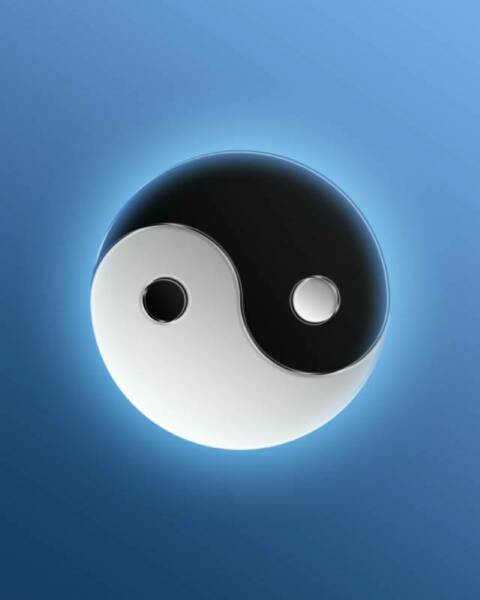

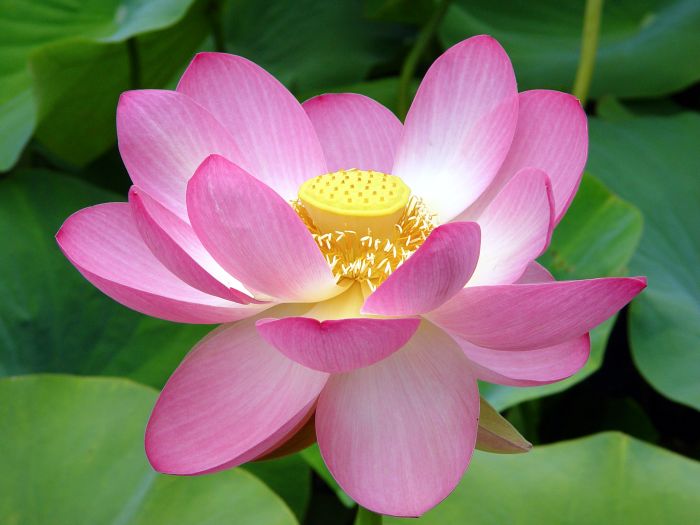
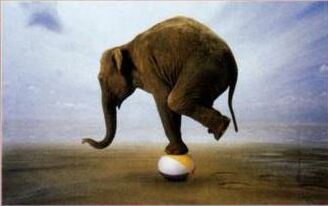
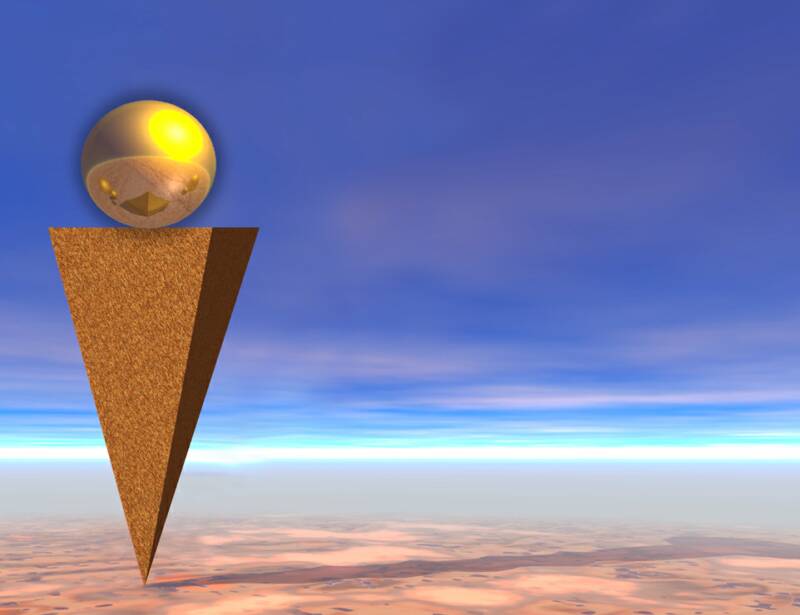
N O N - R E A C T I O N
( E Q U I N I M I T Y )
Type or Level of Equanimity
Environmental or materialistic Equanimity (False equanimity)
Physical Equanimity
(False equanimity)
Mental
Equanimity
(Dawning of Equanimity)
Spiritual (Real) Equanimity
It's Manifestation
Not reacting to conditions of poverty or prosperity, not getting attached to discomforts or comforts, being at ease with heat or cold, summer or winter, beauty or ugliness, material successes or losses, etc.
Not reacting to ‘sensations’ of pleasure or pain that are caused by body conditions, observing pleasure or pain as physical sensations without developing craving for pleasant sensations or aversion for painful sensations.
Not reacting to ‘feelings’ of pleasure or pain, joy or sorrow, observing them as ‘mental phenomena’ without developing craving for pleasant or joyous feelings or without developing aversion for painful or sorrowful feelings; neither becoming glad nor sad, neither feeling resentful nor seeking approval, maintaining mental composure, not getting attached to any thought or feeling or emotion, perfecting non-greed and non-hatred, maintaining peace of mind at any cost.
Experiencing the feeling of neither-perception-nor-non-perception, state of being ‘neither-free-nor-bound,’ having a sense of selflessness, serving without thinking that it is me who is serving (inaction in action), uninterestedness in worldly matters, pure sign of egolessness
Notes of Caution
Development of self-control, tolerance, pain management, power tactics, etc which can lead to false sense of equanimity.
If practiced as a meditation. technique for developing equanimity, it can lead to deep attachment to the technique, ignorance about body-mind phenomena, breeding of ‘meditator- ego’ and false sense of equanimity.
No caution required. Leads to mental purification and the dawn of real equanimity if coupled with the practices of loving-kindness, compassion and gladness towards all beings including the self.
No caution required except realizing that the feeling of neither-perception-nor-non-perception is not a physical feeling but a state of awareness. Such feeling results ONLY from mental equanimity, rightful mindfulness and concentration.
